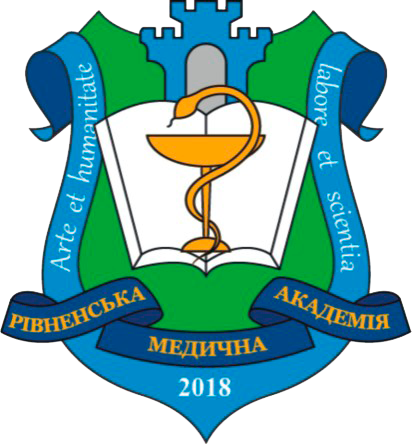PHYSICAL THERAPY FOR STAGE I ARTERIAL HYPERTENSION IN MIDDLE-AGED MEN AT THE LONG-TERM REHABILITATION STAGE
DOI:
https://doi.org/10.32782/health-2024.4.12Keywords:
physical therapy, arterial hypertension, rehabilitation, electrophoresis, low-frequency magnetotherapy, aerobic exercises, resistance exercisesAbstract
The aim is to investigate the peculiarities of physical therapy methods application in middle-aged men with arterial hypertension stage I and to improve the physical rehabilitation programme for this category of patients.Materials and methods. The influence of physical rehabilitation programme on blood pressure correction in 30 men with arterial hypertension stage I aged from 46 to 52 years (mean age was 48,2±2,5 years) was evaluated. The physical rehabilitation programme included basic measures and pathogenetically substantiated physiotherapeutic procedures: therapeutic nutrition, therapeutic massage, kinesitherapy, physiotherapeutic methods of vegetostabilising and hypotensive action. Physical exercises included aerobic exercises or a combination of aerobic and resistance exercises. Data were analysed using statistical methods.Results of the study. It was found that all patients with arterial hypertension had a decrease in systolic and diastolic blood pressure after the physical rehabilitation programme. It was possible to reach the target level and high normal blood pressure in 100% of patients. The most pronounced reduction in both systolic and diastolic blood pressure was in patients who performed aerobic exercise. In a part of patients after aerobic exercises in combination with resistance exercises after exertion an increase in blood pressure within the physiological norm was observed.Conclusions. The obtained data suggest the necessity to recommend a complex programme of physical rehabilitation for patients with arterial hypertension stage I with low risk of cardiovascular complications. Preference should be given to aerobic exercises and necessarily monitor blood pressure after exercise to maximally reduce the negative impact of increased pressure on the patient’s body.
References
Benjamin E., Muntner P., Alonso A. (2019). Heart Disease and Stroke Statistics-2019 Update: A Report from the American Heart Association. Circulation, 139(10), e56-e528. DOI: https://doi.org/10.1161/CIR.0000000000000659
Hindricks G., Potpara T., Dagres N. (2021). 2020 Guidelines for the diagnosis and management of atrial fibrillation developed in collaboration with the European Association for Cardio-Thoracic Surgery (EACTS): The Task Force for the diagnosis and management of atrial fibrillation of the European Society of Cardiology (ESC) Developed with the special contribution of the European Heart Rhythm Association (EHRA) of the ESC. Eur. Heart J., 42(5), 373–498. DOI: https://doi.org/10.1093/eurheartj/ehaa612
Boulestreau R., van den Born B.H., Gupta A. (2022). Malignant Hypertension: Current Perspectives and Challenges. Journal of the American Heart Association, 11 (7), e023397. DOI: https://doi.org/10.1161/JAHA.121.023397
Harrison D.G., Coffman T.M., Wilcox C.S. (2021). Pathophysiology of hypertension: the mosaic theory and beyond. Circ Res, 128 (7), 847–863. DOI: https://doi.org/10.1161/CIRCRESAHA.121.31808
Unger T., Borghi C., Charchar F. (2020). InternationalSocietyofHypertensionGlobalHypertensionPracticeGuidelines. Hypertension (Dallas, Tex: 1979),75 (6), 1334–1357. DOI: https://doi.org/10.1161/HYPERTENSIONAHA.120.15026
Visseren F.L.J., Mach F., Smulders Y.M. etc. (2021). 2021 ESC Guidelines on cardiovascular disease prevention in clinical practice: Developed by the Task Force for cardiovascular disease prevention in clinical practice with representatives of the European Society of Cardiology and 12 medical societies with the special contribution of the European Association of Preventive Cardiology (EAPC). Eur. Heart J., 42, (34), 3227–3337. DOI: https://doi.org/10.1093/eurheartj/ehab484
WHO. (2021). Guideline for the pharmacological treatment of hypertension in adults. World Health Organization. Licence: CC BY-NC-SA 30 IGO 2021. URL: https://www.who.int/publications/i/item/9789240033986
Zhou B., Perel P., Mensah G. (2021). Global epidemiology, health burden and effective interventions for elevated blood pressure and hypertension. Nat. Rev. Cardiol., 18 (11),785–802.DOI: https://doi.org/10.1038/s41569-021-00559-8
Jaspers N., Blaha M., Matsushita K. (2020). Prediction of individualized lifetime benefit from cholesterol lowering, blood pressure lowering, antithrombotic therapy, and smoking cessation in apparently healthy people. Eur. Heart J., 41 (11), 1190–1199. DOI: https://doi.org/10.1093/eurheartj/ehz239
Schmidt B.M., Durao S., Toews I. (2020). Screening strategies for hypertension. Cochrane Database Syst. Rev., 5 (5), Cd013212. DOI: https://doi.org/10.1002/14651858.CD013212.pub2
Palatini P., Asmar R., O’Brien E. (2020). Recommendations for blood pressure measurement in large arms in research and clinical practice: position paper of the European society of hypertension working group on blood pressure monitoring and cardiovascular variability. Journal of Hypertension, 7, 1244–1250. DOI: https://doi.org/10.1097/hjh.0000000000002399
Desbiens L., Fortier C., Nadeau-Fredette A. (2022). Prediction of Cardiovascular Events by Pulse Waveform Parameters: Analysis of CARTaGENE. J Am Heart Assoc., 11 (17), e026603. DOI: https://doi.org/10.1161/JAHA.122.026603
Cheng Y., Thijs L., Aparicio L. (2022). Risk Stratification by Cross-Classification of Central and Brachial Systolic Blood Pressure. Hypertension (Dallas, Tex: 1979), 79 (5), 1101–1111. DOI: https://doi.org/10.1161/ HYPERTENSIONAHA.121.18773
Barochiner J., Aparicio L., Martınez R. (2022). Prognostic value of home blood pressure monitoring in patients under antihypertensive treatment. J Hum. Hypertens, 37 (9), 1–8. DOI: https://doi.org/10.1038/s41371-022-00758-x
Staplin N., de la Sierra A., Ruilope L.M. (2023). Relationship between clinic and ambulatory blood pressure and mortality: an observational cohort study in 59 124 patients. Lancet, 401(10393):2041-2050. DOI: https://doi.org/10.1016/ S0140-6736(23)00733-X.
Cardoso C., Salles G. (2022). Prognostic Value of Changes in Aortic Stiffness for Cardiovascular Outcomes and Mortality in Resistant Hypertension: a Cohort Study. Hypertension, 79 (2), 447-456. DOI: https://doi.org/10.1161/ HYPERTENSIONAHA.121.18498.
Egan B., Kjeldsen S., Narkiewicz K. (2022). Single-pill combinations, hypertension control and clinical outcomes: potential, pitfalls and solutions. Blood Press., 31 (1), 164–168. DOI: https://doi.org/10.1080/08037051.2022.2095254
Stergiou G., Palatini P., Modesti P. (2020). Seasonal variation in blood pressure: Evidence, consensus and recommendations for clinical practice. Consensus statement by the European Society of Hypertension Working Group on Blood Pressure Monitoring and Cardiovascular Variability. Journal of Hypertension, 38 (7), 1235-1243. DOI: https://doi.org/10.1097/HJH.0000000000002341
Саїнчук А. М. (2016). Фізична реабілітація хворих шийно-грудним остеохондрозом і гіпертонічною хворо- бою : дис. ... канд. наук з фіз. виховання і спорту : 24.00.03. Київ, С. 242.





